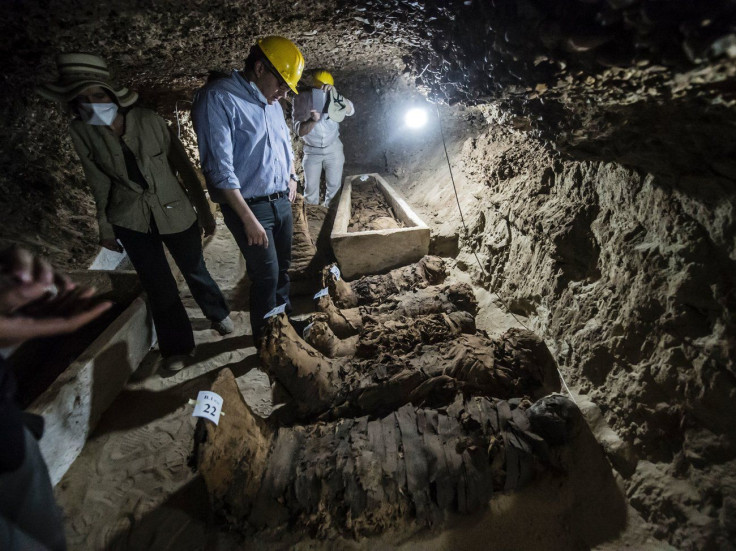17 New Mummies From Ancient Egypt Discovered Underground

Archaeologists have dug up 17 mummies and other artifacts from ancient Egypt near a historical animal graveyard, and they expect to discover even more.
Agence France-Presse reported the mummies, which were not of ancient royals, were uncovered in catacombs a few hours southwest of Cairo while the experts were “following a trail of burial shafts.” They are the first such find for this particular area, which “is close to an ancient animal cemetery.”
Read: Make Eye Contact with a Mummy
AFP reported the 17 mummies were not the only discovery: There were limestone and clay sarcophagi, the decorated coffins often used in ancient Egyptian burials, documents written in the ancient Egyptian script called Demotic on papyrus and gold, and animal coffins.
“The discovery is still at its beginning,” Antiquities Minister Khaled al-Enany told reporters.
The mummies still need to be officially dated, but it’s possible they are from the 300 years before Alexander the Great conquered Egypt in 332 B.C., known as the Late Period, or from a period shortly afterward during which Ptolemy, Alexander’s general, and his family ruled the land until 30 B.C.
As rare as such a find may be, ancient Egyptian artifacts have emerged quite a bit recently. Last month, several mummies were uncovered in a nobleman’s tomb at Luxor, a city in the ancient Egyptian capital of Thebes where you still can find the Luxor and Karnak temples, as well as two royal tombs: the Valley of the Kings and the Valley of the Queens.
Also last month, officials announced they had found another pyramid, one that dates back about 3,700 years, a period during which there was a quick turnover in pharaohs.
Read: Lost Pyramid Found in Egypt
The pyramid was in ruins, and the remains of its interior were found at a royal burial site south of Cairo near the Bent Pyramid. That pyramid is about 1,000 years older than the remains found, and got its name from the bent look it has with a steeper angle on its top half than its bottom half. It may have been the ancient Egyptians’ first attempt at making a smooth-sided but more sloped pyramid.
Mummies are not exclusive to ancient Egyptians, but that society is the one that made the process famous. Preserving and wrapping a dead body was meant to prepare the dead for the afterlife, and the process included removing and storing internal organs in canopic jars, including the lungs, liver, stomach and intestines. The brain was also removed through the person’s nose.
© Copyright IBTimes 2024. All rights reserved.





















